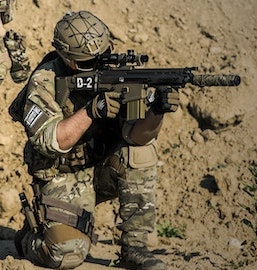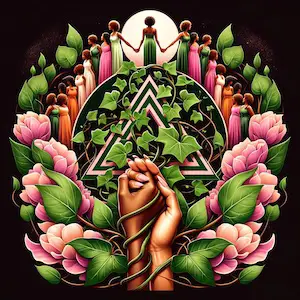In the vast range of military traditions, one practice stands out for its universal appeal and profound impact: the rhythmic and resonant military chants. These cadences, echoing through time and across cultures, serve as a powerful tool for motivation, synchronization, and camaraderie.
Dive deep into the world of these compelling chants, exploring their history, psychological implications, and the undeniable bond they forge among soldiers. Whether you’re a military enthusiast or a curious reader, this comprehensive guide on the best motivational chants for the military promises insights and revelations that resonate far beyond the barracks and battlefields.

Table of Contents
Types of Motivational Chants for Military
Delving deeper into the world of military chants, one can easily discern the different types and their unique purposes. Cadence Calls are crucial, not just for synchronizing marching steps, but also for instilling discipline and order. Each step taken in unison represents the unified strength of the platoon.
Popular Chants Used in Different Military Branches – Every branch of the military, be it the Army, Navy, Air Force, or the Marines, boasts its own set of traditional and contemporary chants. For instance, the Navy might have chants that resonate with the spirit of the sea, while the Air Force’s cadences might soar with the skies. These chants serve to instill pride in one’s specific branch and foster a sense of identity and unity.
The Jody Calls are another intriguing type. Traditionally, they’re more lighthearted and often humorous, recounting tales of a civilian named Jody who’s taken the place of the soldier back home. They might sound like gentle ribbing, but they’re instrumental in building camaraderie and lightening the mood during strenuous marches.
Response Chants engage the entire unit. A leader initiates the chant, and the troops respond, creating a dynamic back-and-forth that energizes and boosts morale. This interactive nature ensures every member feels involved and integral to the unit.
Battle Cries have been used historically before engaging with the enemy. They not only intimidate the opposition but also galvanize troops, filling them with courage and zeal.
In essence, each chant, irrespective of its type, aims at the same goal – to bolster the spirit, create unity, and motivate our brave soldiers during both training and actual combat.
Best Motivational Chants for Military
Military chants have evolved and been refined over the centuries, serving as audible representations of unity, courage, and discipline. Delving into some of the best chants, we can discern their historical roots and the emotions they evoke.
Notable Historical Chants and Their Roots
Chants like the “Airborne Ranger” have been a staple in the U.S. Army, highlighting the valiant feats of the Rangers and their unparalleled bravery. Another age-old favorite, “C-130 Rolling Down the Strip,” has been sung by generations of soldiers, echoing their resilience and determination.
Contemporary Favorites in Military Training
Modern times have seen the rise of new chants that resonate with the evolving spirit of the military. “Hard Work” is one such chant that exemplifies the relentless dedication soldiers put into their training and duty. “Everywhere We Go” is another contemporary favorite that speaks of the pride and respect the soldiers command wherever they go.
Inspirational Origins
Many chants have heartwarming or motivating backstories. For instance, “When My Granny Was 91” may sound whimsical, but it underscores the idea that age is just a number when it comes to spirit and determination. Similarly, “Up in the Morning” is not just about the early rise of soldiers; it’s about their unwavering commitment to their nation, regardless of personal comfort.
The Universal Appeal of Chants
The best motivational chants have an innate ability to touch the hearts of not only those in uniform but also civilians. They speak of universal themes – sacrifice, honor, duty, and the undying spirit of humanity. “Yellow Ribbon” is one such chant that transcends military lines and resonates with anyone waiting for a loved one to return home.
In sum, the best motivational chants for the military are those that strike a chord, invigorate the spirit, and foster a deep sense of belonging and pride. They serve as reminders of the noble path soldiers have chosen and the sacrifices they make in the line of duty.
Best Motivational Chants for Military
- “C-130 Rolling Down the Strip”
Lyrics:
C-130 rolling down the strip,
Airborne daddy gonna take a little trip.
Mission unspoken, destination unknown,
Don’t even know if we’re ever coming home.Description:
This chant is commonly used in the U.S. Army, especially among Airborne units.Meaning:
The chant speaks to the unpredictability and risk of military missions. The soldiers acknowledge the dangers but remain committed to their duty. - “Hard Work”
Lyrics:
Hard work, work!
Hard work, that’s what they say, work!
Every day is a day of hard work, work!
Workin’ for the pay on this day, work!Description:
A chant that emphasizes the relentless dedication soldiers invest in their training and service.Meaning:
This chant is a testament to the soldier’s discipline, commitment, and the rigorous routine they undergo. - “Everywhere We Go”
Lyrics:
Everywhere we go,
People wanna know,
Who we are,
So we tell them,
We are the (unit/squad name)!
Mighty, mighty (unit/squad name)!Description:
A chant reflecting the pride and distinct identity of a particular unit or squad.Meaning:
It emphasizes the unity and camaraderie within a unit and their recognition and respect in the larger world. - “When My Granny Was 91”
Lyrics:
When my granny was 91,
She did PT just for fun.
When my granny was 92,
She did PT better than you!Description:
A light-hearted and humorous chant often used to motivate soldiers during physical training.Meaning:
The chant uses the whimsical idea of an elderly grandmother outperforming young soldiers in physical training to foster friendly competition and motivation. - “Yellow Ribbon”
Lyrics:
Around her hair, she wore a yellow ribbon,
She wore it in the springtime, in the early month of May,
And if you asked her why the heck she wore it,
She wore it for her soldier who was far, far away.Description:
A chant that connects deeply with those who have loved ones in the military.Meaning:
The yellow ribbon symbolizes the hope and longing for the safe return of a soldier. The chant resonates with the universal emotion of waiting for a loved one to come back home.
- “Up in the Morning”
Lyrics:
Up in the morning with the rising sun,
Gonna run all day ’til the running’s done.
Heels hit the ground, making a drumming sound,
Another day of training, gotta push through, no slowing down.Description:
A classic early morning chant to kickstart the day’s training and activities.Meaning:
The chant underscores the discipline of waking up early, the relentless training routines, and the soldiers’ determination to push through challenges every day. - “Ain’t No Use in Looking Down”
Lyrics:
Ain’t no use in looking down,
Ain’t no discharge on the ground.
Oh Lordy, pick me over another year!Description:
A chant that humorously speaks to the idea of commitment and the duration of enlistment.Meaning:
The chant is a humorous take on the idea that once you’re in the military, there’s no easy way out, and you’re committed for the long haul. - “Airborne Ranger Raving Mad”
Lyrics:
I’m an Airborne Ranger, raving mad,
I jump from planes, and I’m super bad.
Silver wings upon my chest,
Of all the forces, I am the best.Description:
A chant used predominantly by the Airborne Rangers, a special operations force in the U.S. Army.Meaning:
It emphasizes the elite nature of the Airborne Rangers and their exceptional skills and valor. - “My Girl’s a Vegetable”
Lyrics:
My girl’s a vegetable, she lives in a hospital,
And I would do anything, to keep her alive.
She’s got a TV eye, and a plastic thigh,
Oh, she’s my girl, and I love her to the core.Description:
A more lighthearted chant used to lighten the mood during marches.Meaning:
Though the lyrics might seem quirky, the underlying sentiment is about commitment and unwavering love in the face of challenges. - “Mama, Mama, Can’t You See?”
Lyrics:
Mama, Mama, can’t you see?
What the Army’s done to me?
Put me in a barber’s chair,
Snip, snap, I had no hair.
Description:
A chant reflecting the transformative experience of joining the military.
Meaning:
The chant humorously addresses the changes, both external and internal, that soldiers undergo when they enlist, from the trademark military haircut to the discipline and structure of military life.
These chants, like the ones before them, showcase a blend of humor, pride, camaraderie, and the spirit of commitment inherent in the military.
The Psychological Impact of Chants
The power of chants goes beyond mere words and rhythm. Delving into their deeper psychological implications, we understand that these rhythmic calls have profound effects on the human mind and group dynamics.
The Influence on Soldier’s Mental Resilience
Chants have a unique way of building mental toughness. Repeating motivational words or phrases helps soldiers internalize positive affirmations, reinforcing their belief in their abilities. For instance, when a group repeatedly chants about overcoming obstacles or pushing through pain, the message becomes ingrained in each soldier’s psyche, boosting their mental resilience.
How Chants Alleviate Stress and Anxiety
In high-pressure situations, the familiar cadence of a chant can serve as a grounding force. The repetitive nature of chants creates a meditative effect, allowing soldiers to momentarily detach from immediate stressors and focus on the rhythm and collective voice of their unit. This shared vocal activity can release tension, making challenges more manageable and fostering a sense of calm amidst chaos.
Fostering a Sense of Belonging
When a group of soldiers chants in unison, it reinforces the notion that they’re part of something bigger than themselves. This collective voice eradicates feelings of isolation, ensuring every individual feels valued and integral to the unit. The shared experience of chanting creates bonds that are hard to break, cultivating a familial atmosphere within military ranks.
Memory Enhancement and Recall
From a cognitive perspective, chants aid in memory retention and recall. The rhythmic patterns make it easier to remember information, protocols, or codes. Many military training modules utilize chants to help soldiers memorize key data, ensuring swift recall during crucial moments.
Emotional Release and Catharsis
On a deeper emotional level, chanting allows soldiers to express their feelings, be it pride, sorrow, joy, or frustration. In moments of grief or loss, chants become a medium of collective mourning. On the flip side, after a triumphant mission, they morph into jubilant songs of celebration. By vocalizing their emotions, soldiers find catharsis, which is crucial for their overall mental well-being.
In essence, the psychological impacts of chants in the military are multi-faceted. They not only motivate and inspire but also play a pivotal role in maintaining the mental health and well-being of our soldiers. Whether it’s through bolstering confidence, creating unity, or providing emotional outlets, chants prove to be an indispensable tool in the military realm.
See Related Posts

Gregorian Christmas Chants

Love Spell Chants

Best Softball Chants for U12

AKA Sorority Chants

Argentina Football Chants

Short Chants and Cheers

Alabama Football Chants

Everything to Know About African Chants

